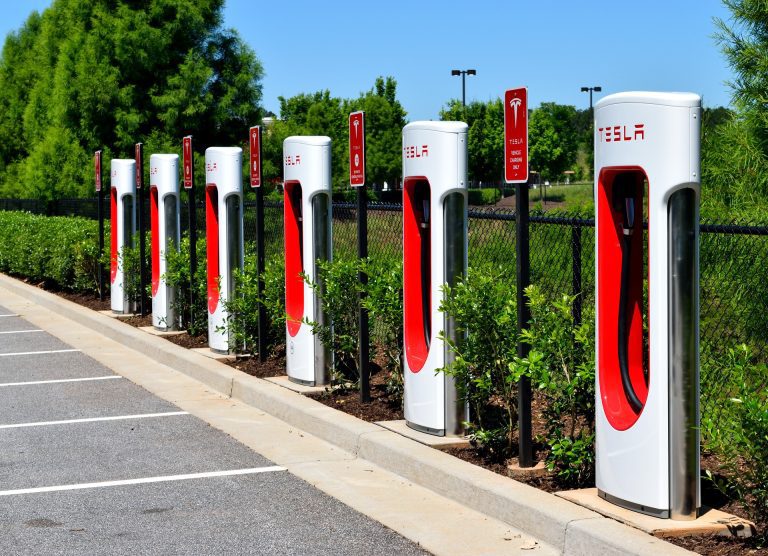As part of the Government’s plan to cut carbon emissions and hit its net zero climate targets, it has produced a new mandatory Building Regulation that sets out a new requirement to install electric vehicle (EV) charging points or cable routes to new or existing buildings that is due for implementation in June this year. Approved Document S: Infrastructure for the charging of electric vehicles, applies to new residential and non-residential buildings; buildings undergoing a material change of use to dwellings; residential and non-residential buildings undergoing major renovation; and mixed-use buildings that are either new, or undergoing major renovation. The approved document does not apply to work subject to a building notice, full plans application or initial notice submitted before 15 June 2022, provided the work is started on site before 15 June 2023. The new regulations include specific criteria for each type of building that a developer needs to consider on a new or existing site, as Jamie Mitchell, Associate Electrical Engineer at Whitecode Consulting, explains: “A new housing scheme that requires 100 new car chargers can result in large infrastructure upgrade costs if the existing network is unable to deliver the required power. The new regulations include an average connection cost* cap of £3600 (excluding VAT) per electric charge point. “If the developer can prove that the connection costs exceed £3600 per electric charge point, they will only be required to install the maximum number of charge points until this cost is reached. The developer is then required to install cable routes only** which can be accessed in the future when the infrastructure is upgraded.” To show that the connection cost is greater than £3600 at least two formal quotes must be given to the building control body during the notice/plans stage of a project. At least one quote should be from a distribution network operator. The quote must clearly show the maximum number of EV charge points that can be installed before the extra grid connections costs exceed £3600 per charge point per dwelling. Whitecode Consulting offers a full utility service which includes applications to energy providers. As technical engineers with a team of expert statisticians on hand that are experienced in negotiating with energy suppliers and providing the required technical guidance if a load is going to exceed its cap. As a specialist consultancy, Whitecode provides its clients with three quotations for every project, so it is already exceeding the standards asked for by the regulators in this instance. The engineers at Whitecode have also developed schemes with Dynamic Load Management Systems that can measure the real time power usage of EV chargers on site and can use the capacity of other loads on an installation when they are not in use. This allows for the total capacity on a site to be maximised to provide EV chargers with the total amount of power possible without compromising power quality throughout the site. These will no doubt become more widely implemented as more large-scale car charger installations are required in the future. With the Government planning on banning the sale of new petrol and diesel cars from 2030 there is a real possibility that there will not be enough charger points to meet demand. If the regulations do not go far enough to entice the construction and utilities industries to upgrade infrastructure and provide EV charging points, the move to electric could stall altogether. In a mixed-use development the problem could be exacerbated if service vehicles that may need charging more regularly are competing with residents for access to chargers. Figures published just last month (January 2022) by the Society of Motor Manufacturers and Traders (SMMT), showed that in 2021 plug-in vehicles accounted for a record one in six registrations, while battery electric cars alone rose to one-in-nine, with more registered last year than 2016-2020 combined. The ratio of vehicle charge points to electric vehicles needs to also grow to match this trend. It comes as no surprise that Shell has opened its first electric vehicle charging hub in Fulham, London. It is the first time the company has converted an existing fuel station into one catering solely for electric vehicles. These charging stations will become more common in the future if people are unable to charge their vehicles at home. The new regulation also differentiates between covered and uncovered car parks. There is not as much provision required for covered car parks. Mitchell believes that this is down to the costs associated with upgrading the infrastructure in the future in covered car parks compared to open car parks where the process would be simpler. For new residential buildings, if all car parking spaces sit within a covered section (this excludes garages and car ports), cable routes for chargers must be installed in all spaces if there are 10 or more spaces, or installed in the total amount of spaces per dwelling if there are less than 10 spaces, or all spaces if there are fewer spaces than dwellings. In new buildings other than residential or mixed-use buildings where all parking spaces are within a covered car park, the requirement to install an electric vehicle charge point does not apply. However, cable routes must still be provided for a minimum of one in five parking spaces. “We have worked on a number of large developments over the last few years that have underground basement car parks with a significant amount of car chargers. It’s clear this section of the regulations does not specifically cater to this type of development. This could result in an increased demand for housing with EV chargers in town and city centres.” Mitchell reasons. The Prime Minister Boris Johnson, when announcing the new laws, said the force driving change would not be government or business, but young people who can see the consequences of climate change and will demand better. Mitchell doesn’t believe it is that simple. He said: “Although this new regulation is a significant improvement on the allocation of EV chargers,






